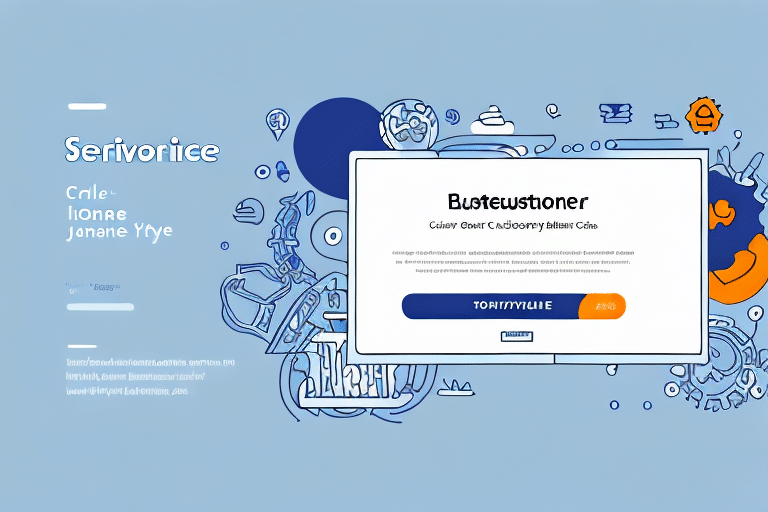Comcast is one of the largest cable providers in the United States, serving millions of customers annually. With such a vast customer base, customer retention is essential to Comcast's success. Retaining existing customers is less expensive than acquiring new ones, and it ensures sustained profitability. This article explores the importance of customer retention for Comcast, how they calculate their retention rates, the factors influencing these rates, and the strategies employed to enhance customer loyalty.
Importance of Customer Retention for Comcast
Comcast's revenue primarily stems from subscription fees for cable TV, internet, and phone services. Satisfied customers are more likely to continue their subscriptions, directly contributing to Comcast's profitability. Conversely, losing customers increases marketing costs for acquiring new ones and can lead to a decline in overall revenue.
Moreover, customer retention plays a vital role in shaping Comcast's reputation. Happy customers are more inclined to recommend Comcast to friends and family, fostering organic growth. In contrast, dissatisfied customers may leave negative reviews, deterring potential new subscribers.
Additionally, retaining customers allows Comcast to gather valuable feedback, identifying areas for service improvement. This continuous improvement helps Comcast stay competitive and maintain its leadership position in the telecommunications industry.
Measuring Customer Retention: Key Metrics and Calculations
Comcast calculates its customer retention rate by dividing the number of customers at the end of a specific period by the number of customers at the beginning of that period, then multiplying by 100 to get a percentage. For example, if Comcast starts the quarter with 10 million customers and ends with 9.8 million, the retention rate is 98%.
In addition to the retention rate, Comcast monitors other critical metrics such as customer satisfaction scores, average revenue per user (ARPU), and Net Promoter Score (NPS). These metrics provide a comprehensive view of customer loyalty and highlight areas needing attention.
Tracking these metrics helps Comcast understand customer behavior, predict churn rates, and implement proactive measures to enhance retention.
Factors Influencing Comcast's Customer Retention Rate
Several factors impact Comcast's ability to retain customers:
- Customer Satisfaction: High levels of satisfaction lead to increased loyalty and lower churn rates.
- Pricing Competitiveness: Offering competitive pricing and flexible packages makes Comcast's services more appealing.
- Quality of Customer Service: Efficient and friendly customer support significantly enhances the customer experience.
- Service Reliability: Consistent and uninterrupted service ensures customers remain satisfied with their subscriptions.
- Personalization: Tailoring services to meet individual customer needs fosters a stronger connection with the brand.
Strategies to Enhance Customer Retention at Comcast
1. Excellence in Customer Service
Comcast invests heavily in training its customer service teams to be courteous, empathetic, and knowledgeable. Prompt resolution of issues and proactive support initiatives help in maintaining high customer satisfaction.
2. Competitive Pricing and Personalized Packages
Regularly reviewing and adjusting pricing structures ensures that Comcast remains competitive. Additionally, offering personalized packages based on customer preferences and usage patterns enhances the value proposition.
3. Loyalty Programs and Incentives
Comcast offers loyalty programs that provide long-term customers with discounts, free upgrades, and exclusive perks. These incentives encourage customers to stay and reward them for their loyalty.
4. Utilizing Customer Feedback
Actively seeking and acting on customer feedback through surveys and focus groups allows Comcast to make informed improvements to their services, directly addressing customer needs and concerns.
The Role of Customer Service in Retention
Customer service is a pivotal component of Comcast's retention strategy. A dedicated support team ensures that customer inquiries and issues are addressed promptly and effectively. By maintaining high standards in customer service, Comcast fosters trust and loyalty among its customer base.
Investments in advanced support technologies, such as chatbots and virtual assistants, enable faster response times and efficient problem resolution, further enhancing the customer experience.
Pricing and Packaging Impact on Customer Loyalty
Comcast's approach to pricing and packaging plays a significant role in customer retention. By offering flexible pricing models and customizable packages, Comcast caters to diverse customer needs, making their services more attractive and reducing the likelihood of customers switching to competitors.
Personalized packages based on viewing habits and internet usage not only provide better value to customers but also create a more tailored experience that strengthens customer loyalty.
Case Studies and Industry Comparisons
In recent years, Comcast has continued to refine its customer retention strategies. Unlike newer cable providers that leverage innovative technologies and unique retention tactics, Comcast maintains a stable retention rate by balancing traditional strategies with modern enhancements.
For instance, Comcast's integration of artificial intelligence in customer support has streamlined service processes, setting it apart from some competitors. However, newer providers might adopt more aggressive personalization techniques, potentially offering higher retention rates.
According to a Statista report, Comcast's retention rates are comparable to industry averages, indicating effective but improvable retention strategies.
Future Outlook and Predictions for Comcast's Retention
Looking ahead, Comcast is expected to continue enhancing its customer retention through investments in data analytics, artificial intelligence, and personalized service offerings. These advancements will likely lead to more efficient customer service operations and more tailored customer experiences.
Expanding the customer service team and leveraging new technologies will reduce wait times and improve service quality, further boosting retention rates. Additionally, ongoing efforts to personalize customer interactions and offers will help Comcast maintain and grow its loyal customer base.
Lessons for Businesses from Comcast's Retention Strategies
Businesses aiming to improve customer retention can draw valuable insights from Comcast's strategies:
- Prioritize Customer Experience: Ensuring that customers have a positive experience at every touchpoint is crucial for retention.
- Invest in Technology: Utilizing advanced technologies to streamline operations and personalize services can significantly enhance customer satisfaction.
- Offer Competitive Pricing: Flexible and competitive pricing structures make services more attractive and accessible to a broader audience.
- Implement Loyalty Programs: Rewarding long-term customers encourages continued loyalty and reduces churn rates.
- Act on Customer Feedback: Continuously seeking and implementing customer feedback helps in refining services and addressing pain points.
By adopting these best practices, businesses can improve their customer retention rates, leading to sustained growth and profitability.
In conclusion, Comcast's focus on customer retention through excellent service, competitive pricing, personalized experiences, and continuous improvement has been instrumental in maintaining its position as a leading cable provider. By learning from Comcast's strategies, other businesses can enhance their own customer retention efforts, ensuring long-term success and customer loyalty.




















